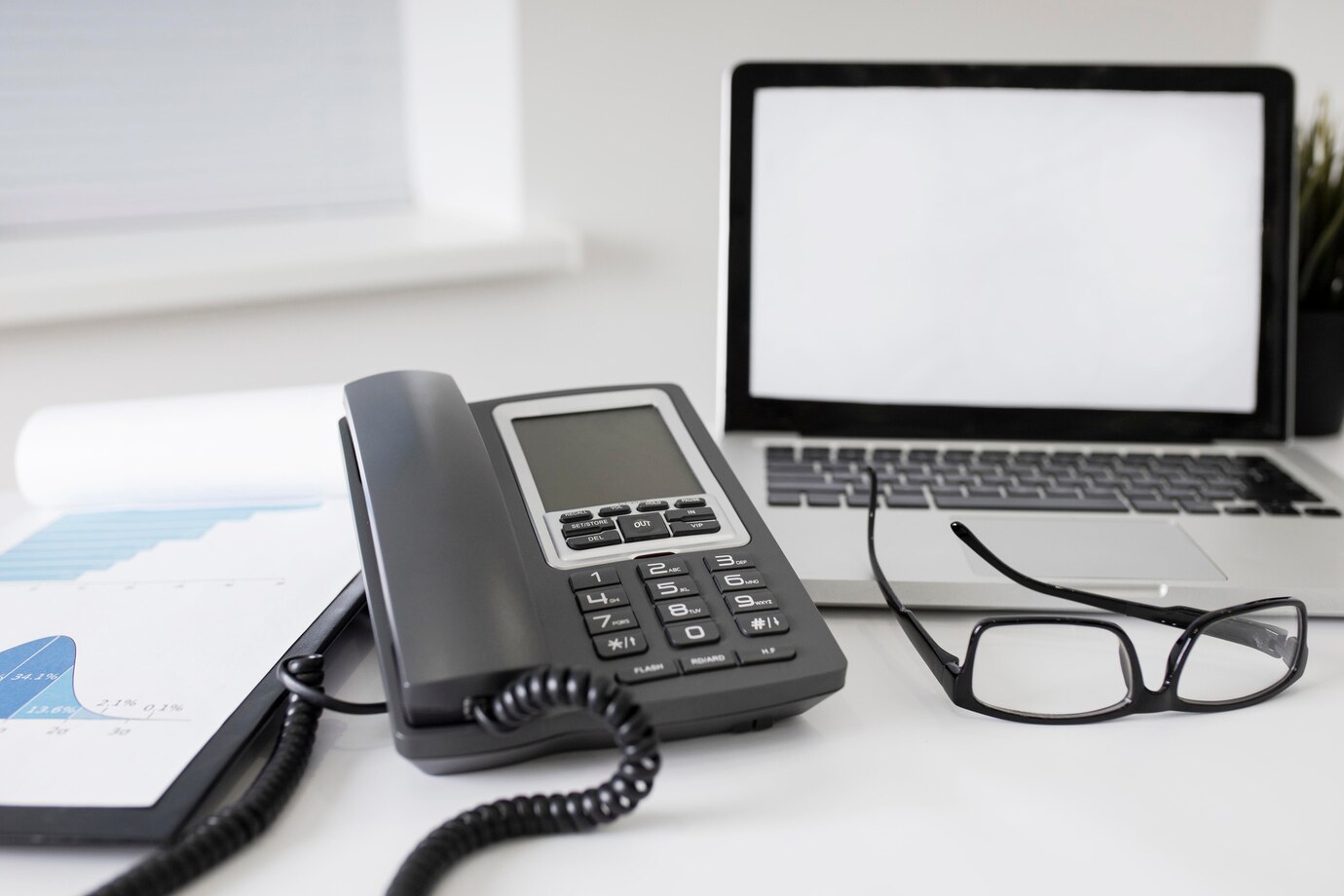The evolution of communication technology has drastically transformed the way individuals and businesses connect. Voice over Internet Protocol (VoIP) is one such advancement that has revolutionised voice communication.
Offering flexibility, affordability, and enhanced functionality, the VoIP phone system has become the go-to solution for both personal and corporate communication needs. However, transitioning from traditional phone systems to VoIP requires an understanding of the equipment necessary to support this cutting-edge technology.
In this blog, we will discuss the essential equipment needed for VoIP as well as additional options. Whether you’re looking to implement VoIP in a small home office or a large enterprise, understanding the technical components involved will ensure a seamless and efficient system.
Understanding VoIP
VoIP technology enables voice communication to take place over the internet rather than through traditional telephone lines. By converting voice signals into digital data packets, VoIP allows users to make phone calls, conduct video conferences, and send messages via a reliable internet connection.
With advanced features such as call forwarding, virtual phone numbers, and voicemail transcription, businesses can streamline operations and enhance customer experiences. Additionally, VoIP supports mobility, allowing remote workers and travelling employees to remain connected from anywhere.
Essential VoIP Equipment
Implementing a VoIP system requires a few key components. These devices and systems form the backbone of your VoIP setup, ensuring voice quality, reliability, and smooth performance.
1. High-Speed Internet Connection
A robust, high-speed internet connection is the foundation of any VoIP system. VoIP relies heavily on internet bandwidth, and slow speeds can result in dropped calls, poor voice quality, and lag. Therefore, the bandwidth and speed of your internet connection are crucial for ensuring consistent communication.
For clear and uninterrupted VoIP calls, your internet connection must provide enough bandwidth to handle both voice and data traffic simultaneously. Each VoIP call typically requires 100 Kbps to 1 Mbps of bandwidth, depending on the call’s audio quality. High-speed broadband, such as fibre-optic, cable, or DSL, is recommended to prevent any potential disruptions.
2. VoIP Phones
VoIP phones are essential for accessing the system’s full range of features and capabilities. VoIP phone equipment comes in various forms, including desk phones, conference phones, and softphones (software-based phones).
- Desk Phones: These are physical VoIP phones that resemble traditional landline phones but are designed to connect via Ethernet or Wi-Fi to a VoIP network. They are a common choice in office environments for day-to-day communication.
- Conference Phones: Used in meeting rooms for group calls, conference phones are optimised to capture sound from all directions, making them ideal for large-scale business conversations.
- Softphones: A software-based option, softphones are installed on computers, smartphones, or tablets. They allow users to make calls directly from these devices using a headset or built-in microphone.
3. VoIP Service Provider
A VoIP service provider is necessary to facilitate the actual phone calls over the internet. This provider is responsible for routing your calls through the cloud, handling call traffic, and providing essential services such as call waiting, voicemail, and caller ID.
Selecting the right VoIP provider involves assessing your communication requirements. Factors such as call volume, international call rates, available features, and customer support should all be considered when choosing a provider. With multiple VoIP providers in the market, each brand offers different pricing and service packages tailored to businesses of all sizes.
4. Network Switches
Network switches are one of the crucial equipment requirements of VoIP. They manage the flow of data between your VoIP phones and other devices connected to the same network. A network switch connects multiple devices, ensuring that data is efficiently directed to the correct destination without overloading the network.
In a VoIP setup, switches help avoid network congestion by prioritising voice traffic over other types of data. This ensures that VoIP calls are transmitted smoothly and without delay, even in high-traffic network environments. Managed switches, which allow for configuration and traffic monitoring, are especially beneficial for optimising VoIP performance.
5. Quality of Service (QoS) Routers
Routers equipped with Quality of Service (QoS) functionality are essential for prioritising VoIP traffic over other data on your network. A QoS-enabled router ensures that voice data receives higher priority, reducing the risk of latency, jitter, and packet loss.
QoS routers analyse and prioritise traffic based on data type, ensuring that bandwidth-intensive activities like video streaming or large file downloads don’t affect the quality of your VoIP calls. This is especially important for businesses running multiple devices and applications on the same network.
Optional VoIP Equipment
There are some additional VoIP equipment that, although not mandatory, can enhance the overall functionality and ease of use of a VoIP system.
1. Power over Ethernet (PoE) Switches
Power over Ethernet (PoE) switches simplify the setup process by delivering power and data to VoIP phones via a single Ethernet cable, eliminating the need for separate power adapters. With PoE switches, you can place VoIP phones in locations without power outlets, reducing cable clutter and improving installation flexibility. This is particularly useful in large office spaces or conference rooms where cabling can become cumbersome.
2. VoIP Headsets
VoIP headsets allow for hands-free communication, providing a more comfortable experience for users during long calls or meetings. High-quality headsets equipped with noise-cancelling microphones can significantly improve call clarity, especially in noisy environments. Wireless options, such as Bluetooth headsets, also offer mobility and convenience for professionals who need to multitask during calls.
3. VoIP Gateways
A VoIP gateway is a highly useful VoIP equipment that bridges the gap between traditional telephone systems with modern VoIP networks. It allows businesses to keep their existing analog infrastructure while transitioning to VoIP. For companies that still rely on traditional phone systems but want to leverage the benefits of VoIP, a VoIP gateway enables seamless integration. It converts analog signals into digital packets, allowing legacy phone systems to function with a VoIP setup.
4. Analog Telephone Adapters (ATA)
An Analog Telephone Adapter (ATA) is another device that allows the use of analog phones with a VoIP service. It converts analog signals into digital ones, making it possible to use standard telephones with a VoIP network. ATAs are cost-effective solutions for users who want to continue using their existing analog phones without investing in new VoIP-compatible devices. They are easy to install and can help reduce the overall cost of transitioning to VoIP.
Additional Considerations for VoIP Setup
Setting up a reliable and efficient VoIP system goes beyond acquiring the basic equipment. Several additional factors must be considered, which will significantly impact the performance, functionality, and security of your VoIP system.
Do You Need a Special Modem or Router for VoIP?
In most cases, a standard modem and router can support VoIP. However, for improved performance, it is recommended to use a Quality of Service (QoS)- enabled router. QoS allows your router to prioritise VoIP traffic, ensuring that voice calls get the bandwidth they need, even when other devices are consuming data for activities like streaming or downloading.
If your current router lacks QoS or struggles with heavy traffic, upgrade to equipment optimised for VoIP technology to enhance call clarity and prevent issues like dropped or laggy calls. As for modems, most high-speed options—like fibre-optic or cable modems—work fine for VoIP. However, if your internet connection is slow or inconsistent, upgrading to a modem with better data-handling capabilities may be necessary to minimise latency and ensure smooth voice transmission.
Can You Use Regular Phones for VoIP?
Yes, you can use regular analog phones with a VoIP system by using an Analog Telephone Adapter (ATA). The ATA converts the analog signal from your phone into digital data, allowing it to function over a VoIP network. This is a cost-effective way to transition to VoIP without purchasing new phones.
However, there are some limitations. Regular analog phones might not support advanced VoIP features such as call forwarding, video conferencing, or voicemail-to-email. To fully leverage VoIP’s capabilities, upgrade to the latest VoIP equipment, such as desk phones or softphones. VoIP phones also offer better integration with modern systems, clearer audio, and more user-friendly interfaces designed for digital communication.
Security and Encryption for VoIP Communications
VoIP systems are susceptible to cyber threats like eavesdropping, data breaches, and denial of service (DoS) attacks. Securing your VoIP system is essential to protecting sensitive information and ensuring uninterrupted service.
One of the primary risks in VoIP communication is eavesdropping, where hackers intercept and listen to voice calls. To combat this, encryption protocols like Secure Real-Time Transport Protocol (SRTP) are used to encrypt voice data during transmission, ensuring only the intended recipient can decode the conversation. Additionally, Transport Layer Security (TLS) secures the connection between devices and servers, preventing third parties from intercepting or tampering with data.
Implementing firewalls and intrusion detection systems (IDS) is recommended to further protect your system from DoS attacks, which can overload the network and disrupt VoIP service. These tools can help monitor network traffic and block malicious activity before it affects communication.
Regular security audits are crucial to maintaining a secure VoIP system. By staying on top of updates, patching vulnerabilities, and reviewing your security protocols, you can protect your network from evolving threats and ensure the reliability of your VoIP setup.
Conclusion
Setting up a VoIP system requires a clear understanding of both essential and optional equipment. High-speed internet, VoIP phones, a service provider, and network switches form the core components, ensuring smooth and reliable communication. Additional tools like PoE switches, headsets, and ATAs can further optimise your setup, offering flexibility and enhanced functionality.
By selecting the right equipment and ensuring proper security measures are in place, you can successfully implement a VoIP system that transforms your communication capabilities, whether for personal use or within a business environment. Assess your specific needs and budget to make informed decisions about the components necessary for your VoIP setup.
Thinking about installing a VoIP phone system for your business? Contact our team at SIP Solutions. Call 1300 604 124 today.


